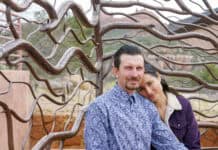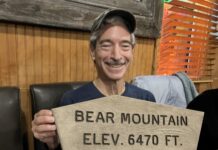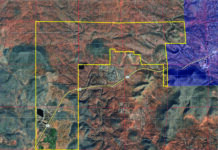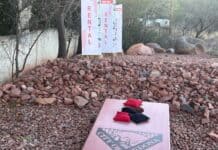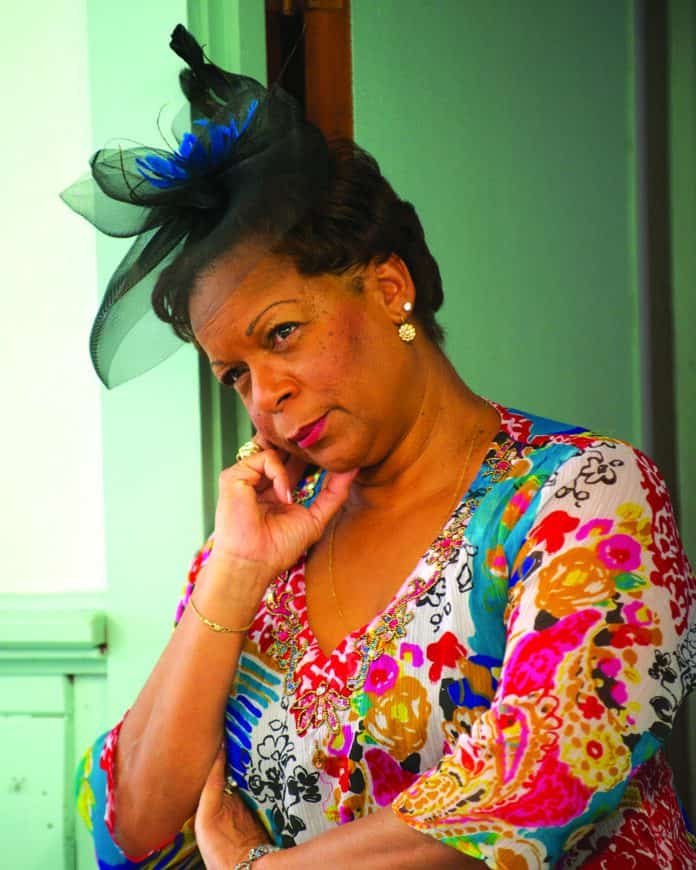
The Emerson Theater Collaborative is collaborating with the Verde Valley School to host a free performance of “Zora Neale Hurston and Langston Hughes: A Reading of their Works” on Wednesday, Jan. 31, from 2 to 4 p.m. at Brady Hall at 3511 Verde Valley School Road in the Village of Oak Creek.
The performance will kick off Black History Month 2024, which takes place throughout the month of February. This year’s theme is “African Americans and the Arts.”
“Much of what we have active in the world of arts today is because of a merging of cultures,” Zora Neale Hurston’s niece and retired sociologist Lucy Anne Hurston said. “The arts that Zora was interested in and captured on film and in writing give us a broad picture of what was going on in the U.S then. We can trace that and jazz and tap dancing all through the American experience. So we [African-Americans] were major contributors, Josephine Baker and Langston Hughes, to all of the arts. I think that that appreciation for different means and forms of art is one of the things that [Zora] gave us.”
This performance is the first time that Camilla Ross, the head of Emerson Theater Collaborative, will be staging this event in Sedona after holding it for several years at her other base of operations in Mystic, Conn., with members of the Hurston family to celebrate the author’s legacy and role within the Harlem Renaissance.
“[Zora Neale Hurston] was not willing to trade her African-descended culture for a better spot in society to move up, she was not going to trade up and homogenize who she was,” Lucy Anne Hurston said. “But she also felt that there should be a respect for all different types of ways of being and she just [wanted] hers included.”
For Lucy Anne Hurston, one of the central parts of the Harlem Renaissance was a rejection of the status quo of traditional American arts.
“Something that was dealt with during the Harlem Renaissance [was] this idea of homogenizing, cleansing, filtering your cultural backgrounds to trade up to fit into the American dream, the American ideal, the melting pot of ideas,” Lucy Anne Hurston said. “[Zora Neale Hurston] wasn’t down for that; she said we can all have our different ways and value them equally. Instead of this melting pot, just anybody throw everything in and the weaker cultures get suffocated.”
Such a reexamination of the nation appeared in Ross’ favorite work by Hughes, his 1936 poem “Let America be America Again,” which argued the American dream never existed for the nation’s poor.
‘Let America Be America Again’
“O, let my land be a land where Liberty
Is crowned with no false patriotic wreath,
But opportunity is real, and life is free,
Equality is in the air we breathe.
[There’s never been equality for me,
Nor freedom in this “homeland of the free.”]
“One of the most famous things that Zora’s remembered for is her use of Afro-centric language, dialogue, dialect phrases, and she thought that was beautiful and she didn’t have to clean it up in what was called at that time ‘proper English,’” Lucy Anne Hurston said. “This argument has come up multiple times since she was here, with the discussions of Ebonics. There are different ways of being and doing and she just thought everybody should get a fair shot at whatever your culture is being represented in America.”
“There’s no cost for people to come and we’d love the public just to come and listen and enjoy,” Ross said. “There’ll be appetizers, there’ll be some local readers of the words. So it’s going to be myself, there’ll be students from Verde Valley School reading, there’ll be people from the public … and we’re going to share the works of those two amazing writers. It’s good to know some of the great writers of our time and I think these are two of the best writers of our time.”
Hurston and Hughes were among the major voices of the Harlem Renaissance art movement centered in the eponymous New York City neighborhood during the 1920s and 1930s, which was driven by African-American artists expressing their identities and asserting their rights.
“In July 1927, Hurston and Hughes embarked on a tour of the Deep South — part business, part pleasure — which began with a chance meeting in downtown Mobile, Ala., where the two ran into each other outside the train station,” the New York Times wrote on March 19, 2019. “Hurston was there to interview Cudjo Lewis, the last living former slave born in Africa; Hughes was giving readings and performing his own research.”
The two would establish a long-standing friendship that ultimately fell apart while writing the play “Mule-Bone: A Comedy of Negro Life in Three Acts” in 1930 and 1931.
“[You should read Hurston’s work] because you want to know about the world,” Anne Hurston explained. “You want to get out of your silo of sameness in your cultural circle, and you want to try something new. You want to see other aspects of the world and the people around you as a way to understand them. You look to their art and their literature and their music, for a broadening of appreciation, and to know what other cultural groups do in the arts.”
Those interested in reading during the show or those with questions can contact the Emerson Theater Collaborative at (860) 705-9711.
Zora Neale Hurston and Langston Hughes
Zora Neale Hurston was born Jan. 7, 1891, in Notasulga, Ala., the fifth of eight children, to John Hurston, a carpenter and Baptist preacher, and Lucy Potts Hurston, a former schoolteacher.
She attended Morgan Academy in Baltimore, Md., and Howard Prep School in Washington, D.C., then Howard University from 1919 to 1924, earning an associate’s degree in 1920. She published her first story, “John Redding Goes to Sea,” in Stylus, the campus literary society’s magazine, in 1921, and also co-founded The Hilltop, the university’s student newspaper. While also publishing numerous short stories, Hurston undertook anthropological and ethnographic research as a scholar at Barnard College and Columbia University, conducting field work in Florida and Harlem, N.Y., where she met Langston Hughes in 1925.
Hurston’s research focsued on the black communities of north Florida, Georgia, Jamaica and Haiti. She published her most popular book, “Their Eyes Were Watching God,” in 1937, in addition to three other novels, 50 short stories, plays and essays and numerous poems.
Hurston also covered the two trials of Ruby Jackson, a wealthy black woman who was convicted of murdering Dr. C. Leroy Adams, a white doctor and state senator-elect who had abused her, in 1952.
Hurston died on Jan. 28, 1960, in Fort Piece, Fla. In 1975, author Alice Walker published “In Search of Zora Neale Hurston,” launching a revival of interest in Huston’s work.
Langston Hughes was born on Feb. 1, 1901, in Joplin, Mo., but was raised mainly by his maternal grandmother in Lawrence, Kan. He moved to Cleveland, Ohio, where he graduated from high school before attending Columbia University to study engineering. He published his first poems in “The Crisis,” the official NAACP magazine, and in the “Columbia Daily Spectator” in 1921. After a brief stay in Paris and England in the early 1920s, he returned to Washington, D.C., in 1924.
Hughes earned a degree from Lincoln University in Pennsylvania in 1929, then moved to Harlem, where he wrote short stories, plays, novels and poetry until his death on May 22, 1967.
Hurston and Hughes toured the Deep South in 1927 on a folklore-gathering expedition in her two-seater Nash coupe, meeting scientist George Washington Carver and singer Bessie Smith and interviewing subjects in towns and cities.
They co-wrote the play “Mule Bone” in 1930 as a comedy about African-American life that didn’t consist of racial stereotypes; it was based on a folktale Hurston had collected in Florida.
The pair had a falling out in 1931 over writing credits and due to a misunderstanding. Hughes erroneously assumed that Hurston had sent the play to a theater troupe, when it was actually author and Harlem Renaissance patron Carl Van Vechten had done so.
Christopher Fox Graham


